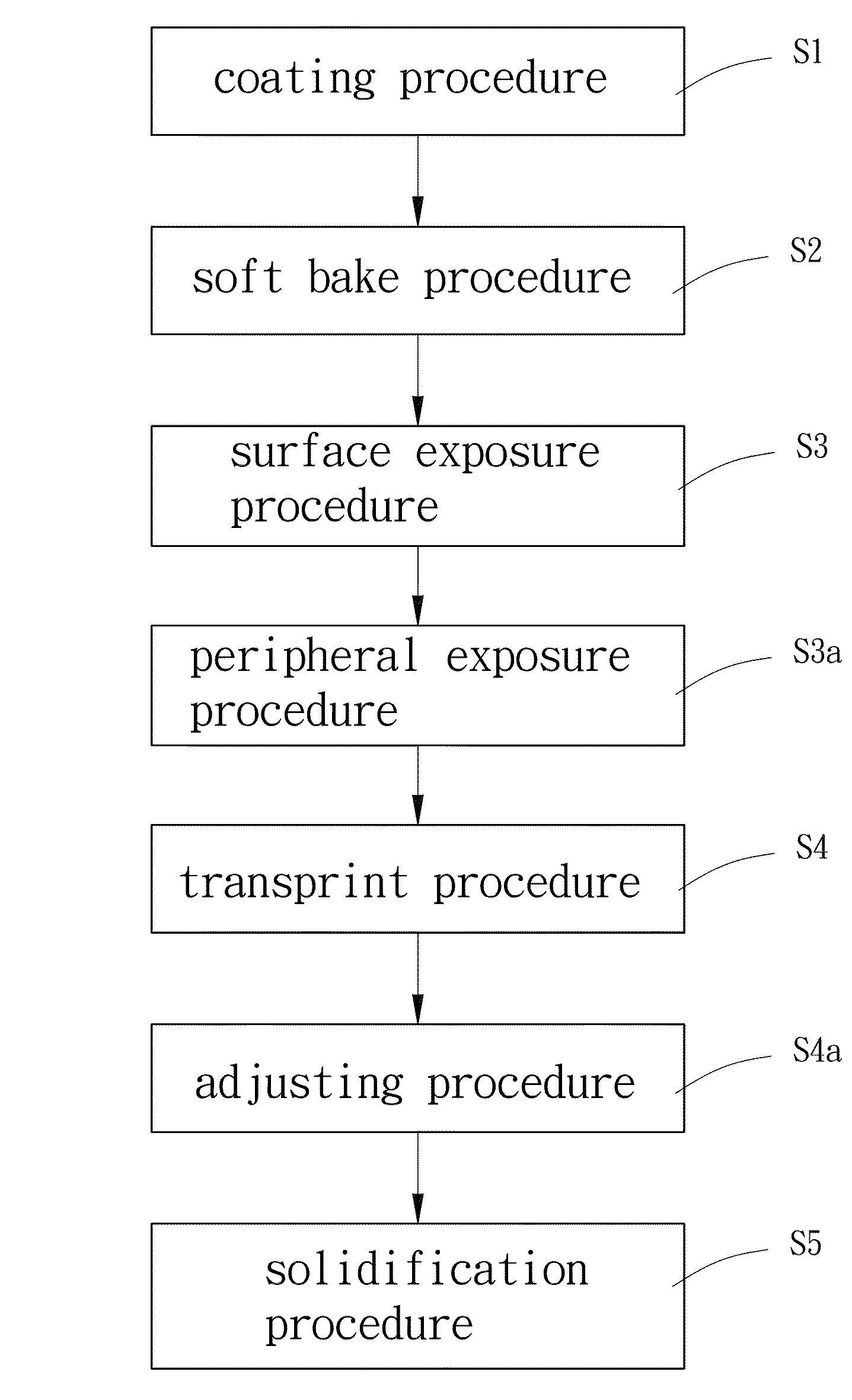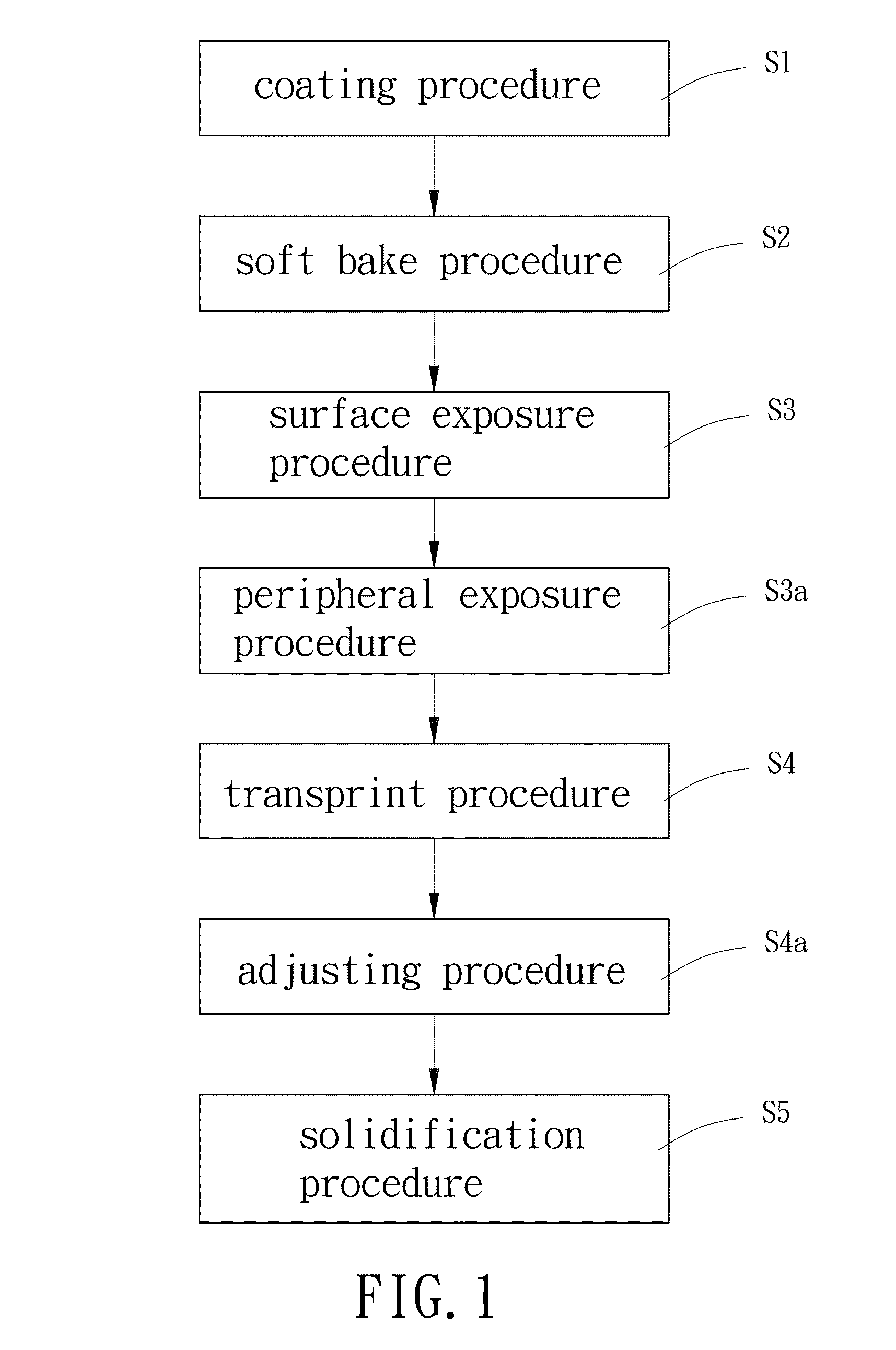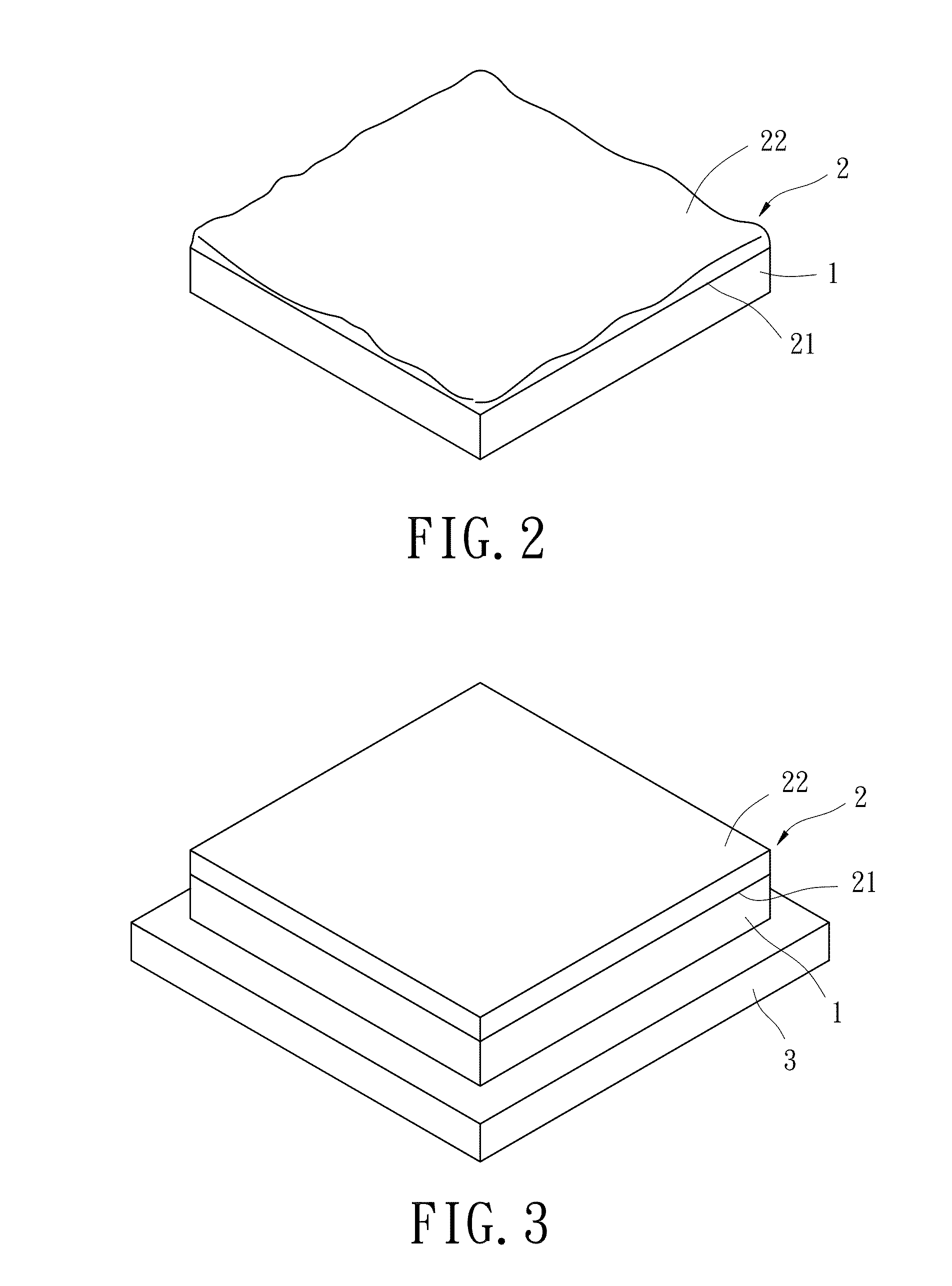Method of manufacturing microlens
a manufacturing method and microlens technology, applied in the field of microlens array manufacturing, can solve the problems of high manufacturing cost, low manufacturing efficiency, and inability to manufacture microlenses in mass production continuously, and achieve the effect of enhancing manufacturing convenience and lowering manufacturing cos
- Summary
- Abstract
- Description
- Claims
- Application Information
AI Technical Summary
Benefits of technology
Problems solved by technology
Method used
Image
Examples
Embodiment Construction
[0034]To make it easier for the objective of the invention, its structure, innovative features, and performance to be understood, reference is made to the following preferred embodiment together with the attached drawings for the detailed description of the invention.
[0035]With reference to FIGS. 1 and 2, a coating procedure 51 is performed firstly. The photosensitive polymer is coated onto a surface of a first substrate 1 to form a polymer film 2, wherein the polymer film 2 has a first surface 21 and a second surface 22, and the first surface 21 is a surface of the polymer film 2 in contact with the first substrate 1. More specifically, the first substrate 1 can be made selectively of glass or another material, and it is preferable to wash the first substrate 1 before the polymer film is coated onto the first substrate 1 to keep impure substances from remaining on the surface of the first substrate 1. Secondly, a photosensitive polymer is coated onto the first substrate 1, wherein ...
PUM
| Property | Measurement | Unit |
|---|---|---|
| hole diameter | aaaaa | aaaaa |
| hole diameter | aaaaa | aaaaa |
| glass transition temperature | aaaaa | aaaaa |
Abstract
Description
Claims
Application Information
 Login to View More
Login to View More - R&D
- Intellectual Property
- Life Sciences
- Materials
- Tech Scout
- Unparalleled Data Quality
- Higher Quality Content
- 60% Fewer Hallucinations
Browse by: Latest US Patents, China's latest patents, Technical Efficacy Thesaurus, Application Domain, Technology Topic, Popular Technical Reports.
© 2025 PatSnap. All rights reserved.Legal|Privacy policy|Modern Slavery Act Transparency Statement|Sitemap|About US| Contact US: help@patsnap.com



